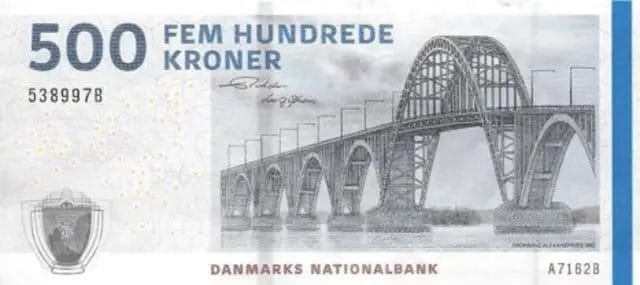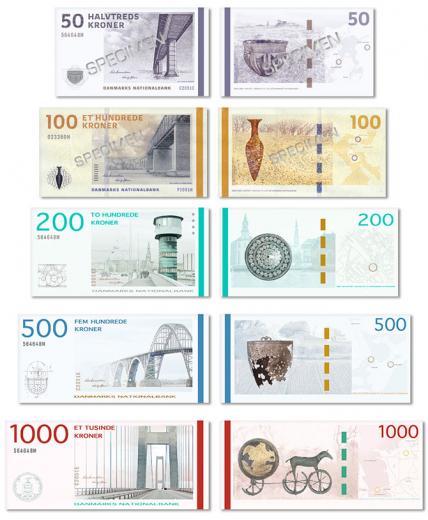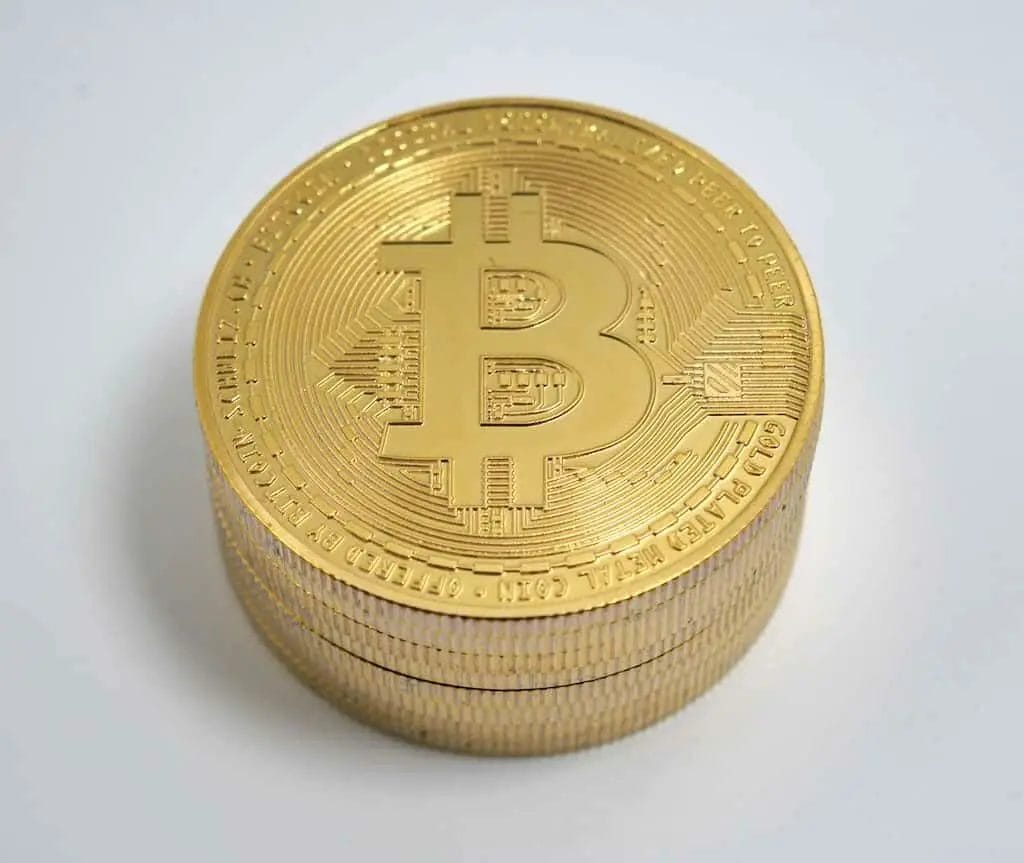What is the Currency of Denmark?
The currency of Denmark is the Danish Krone (sign: kr; code: DKK). This is also the official currency of the autonomous provinces of Greenland and the Faroe Islands. Even though Denmark is part of the European Union, it did not join the “Euro land”.
The plural form of Denmark's currency is “kroner”.
One krone is divided into 100 øre, the singular form being the same as the plural.
The ISO 4217 code is DKK; the domestic abbreviation is “kr.”. Occasionally, the variants DKR or Dkr are seen, but these are not official.
The krone is linked to the euro via the European Union's exchange rate mechanism.
Danish Krone Exchange Rate
Here are some currency conversions with today's (2019) exchange rate:
Denmark Currency to USD
DKK to USD: 1 DKK = 0,15 USD
USD to DKK: 1 USD = 6,7 DKK
Denmark Currency to Euro
DKK to EUR: 1 DKK = 0,13 EUR
EUR to DKK: 1 EUR = 7,5 DKK
Denmark Currency to Pound
DKK to GPB: 1 DKK = 0,12 GPB
GPB to DKK: 1 GPB = 8,7 DKK
Denmark Currency Converter
Christiania’s Complimentary Currency
Christianshavn is a Copenhagen neighbourhood.
The Christiania currency is an economic experiment which is aimed at strengthening the local economy and currency. It promotes a sustainable alternative to the global economy.
If the currency’s circulation does well, the profit is reinvested in the local community. If in any case the results are not positive, the effects are contained locally and the citizens are directly responsible. This means that they can solve the problem if they put effort into it through responsible citizenship.
Where does this monetary independence come from?
It was in December of 1997 when Christiania –the Free City of Copenhagen, began this experiment. They created the local currency coin called the “wage”, which is worth 50DKK (around $6).
The coin’s design changes yearly. So far they have had a snail (1997), a bicycle cart (1999), a sun sign (2000) and a wren (2001). These coins are stamped in copper and brass. Special silver coins are also available for coin collectors. There are 9000 coins to date.

Christianshavn Currency Running & Rules
The currency is accepted in bars, restaurants, shops and companies throughout Christiania. It is managed by the Currency Group which issues them.
The small town mainly profits from the collectors and the tourists who keep the coins. This profit is transferred to a common fund which has supported five different projects for cultural, social, ecological and experimental initiatives for the improvement of Christiania and a small portion is used for grants to persons or groups who wish to learn something that will benefit the community.
Over 2600 communities around the world have started to use complimentary currencies to boost their local economy. The more the currency is used; more money comes back to the community. It does not just help financially, but it helps create social responsibility.
Send & Receive money with TransferWise: It's Fast, Easy & Safe
If you're thinking about sending money abroad Transferwise is the solution. Why? Well, you can send it in any currency possible at a real exchange rate. From EUR to GBP, USD to EUR, AUD to USD… Just name it! You can send money abroad without hidden fees. Also, you can track your transfer at any time.
Not only that! If you're planning to receive money from abroad you can reduce stress by using TransferWise as well. You can talk with your employer, use TransferWise, and get paid like a local. Also, there is a TransferWise debit card, option to move your money between countries, and more. Your money and data are safe, regulated by the FCA and global support is always there for you!
Denmark Currency: how to manage your money there?
If you're on a trip around Denmark and do not want to pay tax amounts for each expense, you should consider open an online bank account especially for travellers.
We recommend the German bank N26, which is really great. There are 2 options: the free one – N26 YOU – if you are not a big traveller, or the N26 Metal subscription, which is suitable for regular travellers, offering you unlimited and free withdrawals and payments abroad.
Compare both options to find the one who suits you the best. There is also the business offer, much more complete for freelancers or entrepreneurs.
If you want to make your life easier when travelling, and avoid high fees, you can open your Metal account here. It is very easy because everything goes online. You don't need any physical appointment with a banker.
Denmark Currency: Danish Banknotes Renewal
Denmark regularly issues new banknotes.
New recent banknotes update
Here is an update on the latest releases recently released (2016):
- 50 kroner
- 200 kroner
- 500 kroner

A new series of banknotes is planned for 2021.
Back in 2009: New Banknotes designed by Danish artist Karin Birgitte
In a bid to firm up its security measures especially against counterfeit money, Denmark has issue new 100 kroner banknotes in 2010. They have been well designed by Danish artist Karin Birgitte Lund and feature the country’s bridges and old artifacts.
Designed by Karin Birgitte Lund, the 100-kroner banknotes showcased Denmark’s renowned bridges and prehistoric artifacts. As advanced technology has been used to create them, the new banknotes of the Danish currency cannot be easily counterfeited or copied.
Banknotes Security and Design
The designing process of these new notes began way back in 2006. Danmarks Nationalbank spearheaded the designing of a new banknote series with more advanced security features to replace the 1997 series which is now in circulation. Among the security elements are a window thread that has a moving wave pattern and a sophisticated hologram that is able to reflect light in a variety of colors. These are in addition to the usual watermark and hidden security thread.

Explanation of the Artist's choice of Design
As for the theme, artist Karin Birgitte Lund chose to use bridges to symbolize links between the different parts of Denmark. They also referred to links of the past and present with the past symbolized by the five prehistoric items and the present symbolized by the Danish bridges.
The bridges shown in the banknotes are the Sallingsund in the 50 kroner, Belt Bridge in the 100 kroner, Knippelsbro in the 200 kroner, Queen Alexandrine in the 500 kroner and the Great Belt Bridge in the 1,000 kroner.
The 50 kroner banknotes were issued in August 2009 to be followed by the 100 kroner in May. The 200 kroner notes were released in October 2010, the 500 kroner in February 2011 and the 1,000 kroner in May 2011. The notes differ in sizes while the 100 and 200 kroner banknotes have embossed prints to help the visually impaired people easily distinguish between the two.
Denmark Currency: Chronological review of the new banknotes over the past 10 years
- 50 kroner: 11 August 2009 – Sallingsund Bridge and the Skarpsalling vessel
- 100 kroner: 4 May 2010 – Little Belt Bridge and the Hindsgavl dagger
- 200 kroner: October 2010 – Knippelsbro and a belt-plate from Langstrup
- 500 kroner: February 2011 – Queen Alexandrine's Bridge and the bronze vessel from Keldby
- 1,000 kroner: May 2011 – Great Belt Bridge and the Sun Chariot
How Denmark is Treating Digital Currency
With all the controversy and talk spreading around the subject of digital currency such as the Bitcoin, Denmark has made some important decisions regarding it and its use. The Tax Board in Denmark has ruled that gains and losses obtained from casual trading are not subject to taxation. This simply means that gains derived from digital Denmark currency trading is not taxable. In the same breathe, losses cannot be claimed as tax deduction.
Denmark Currency precautions against crypto money
The banking regulator of the European Commission has ordered lenders to stay away from Bitcoin, at least until rules on virtual currencies are established. The European Commission has expressed its intent to impose such rules. This comes in the wake of the world's biggest Bitcoin exchange filing for bankruptcy and China's central bank decision to bar financial institutions in their territory to handle virtual currency.
Denmark is reflecting on an inescapable adaptation in the world of today
Digital currency has been giving Denmark some issues to seriously think about. Subjecting it to tax given its volatility can be problematic as to determining what rate to apply. This probably explains the decision that came out not to subject casual trading to taxation. It was clarified however that Bitcoin trading businesses will be taxed thus winnings and losings will need to be declared to the government.
The decision of Denmark's Tax Board is founded on the reality that Bitcoin is not like real money having a physical form which can be taxed by the government. It has ruled Bitcoin transaction as purely private. While Denmark has made its initial stand known, it is highly possible that there will be changes in the future considering the call for international cooperation in establishing rules concerning digital currency.

Denmark Currency Fun Facts
Monopoly Cash for Danish Kroner
In 2009, a woman in Denmark played a risky game when she successfully convinced a bank to exchange bills worth two thousand “Kronor” in Swedish Monopoly money for a quantity of real Danish money. The Denmark currency is Kroner.
But the 61-year-old may be left needing a “get out of jail” card after a second attempt to exchange the toy cash backfired.
The woman entered a branch of the Nordea bank in Svendborg and handed over two fake bills. When the teller failed to spot that the Swedish bills were far from authentic, the woman walked away from the counter with a cool 1,400 Danish kroner ($240).
Branch manager Ulrik Feveile Nielsen said that an inexperienced staff member had been manning the cash desk at the time.
“As long as humans are involved, mistakes will happen,”
he said.
But rather than quitting while she was ahead, the woman had another roll of the dice and returned to the bank the following day with a further eight thousand “kronor” in Monopoly money.
This time staff were wise to her ways and immediately reported the matter to the police.
When placed under arrest, the woman claimed that a third party had forced her into the fraudulent exchange attempts.


Great post! The insights about Denmark’s currency exchange rates are really helpful for planning my trip. I didn’t realize how the rates could vary so much based on where you exchange money. Thanks for the tips on getting the best rates!